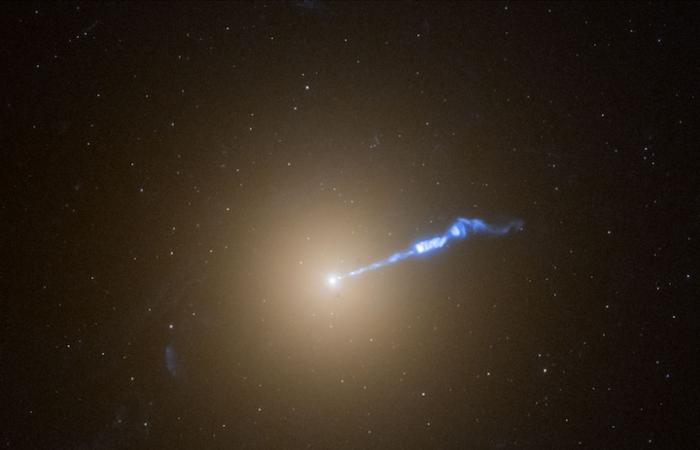The M87 galaxy is monstrous.
It contains several billions of stars, compared to the hundreds of billions in our Milky Way. And the supermassive black hole at its center shoots an extended beam of energy into space. The Hubble Space Telescope, operated by NASA and the European Space Agency, has captured a new image of this energetic cosmic event, which produces a beam of superheated gas 3,000 light years long (a single light year is equivalent to nearly 6 trillion miles).
NASA calls this jet “blowtorch-like” and it appears to trigger many nearby stars on its path toward burst.
“We don’t know what’s going on, but it’s just a very exciting finding,” said Alec Lessing of Stanford University, who led the study. research in discovery, the agency said in a statement. “This means that something is missing in our understanding of how jets from black holes interact with their environment. »
A NASA scientist has viewed the first photos of Voyager. What he saw gave him chills.
Black holes themselves produce no light. But matter can quickly spin around black holes, forming a vibrating “accretion disk” that radiates light. And sometimes, matter falling into a black hole can “be redirected” into two jets, firing in opposite directions, NASA explained.
Crushable speed of light
In the Hubble telescope image below, the colossal elliptical galaxy M87, which is shaped like a giant egg, looks like “a fuzzy, translucent white cotton ball,” the ESA said. The jet, as you can see, is the wavy blue beam shooting out from the galactic core, which houses the supermassive black hole (it has the mass of 5.4 billion suns).
A Hubble view of a vibrating jet erupting from the M87 galaxy.
Credit: NASA / ESA / STScI / Alec Lessing (Stanford University) / Mike Shara (AMNH) / Acknowledgments: Edward Baltz (Stanford University) // Image processing: Joseph DePasquale (STScI)
As the jet passes through the galaxy, astronomers suspect it triggers a type of stellar explosion called a “nova.” These flares occur in double star systems with an aging star – which is bloated and shedding layers – and a white dwarf star, which is the hot core of a sun-like star that has lost its mass. The inflated star pours material (hydrogen) onto the white dwarf. “When the dwarf has accumulated a surface layer of hydrogen a kilometer and a half deep, this layer explodes like a giant nuclear bomb,” the agency explained. And then the progressive process resumes.
Compared to the rest of the galaxy, researchers found twice as many novae near this bright blue jet as elsewhere in M87.
“There’s something that the jet does to star systems that wander around,” Lessing said. “Perhaps the jet is somehow throwing hydrogen at the white dwarfs, causing them to erupt more frequently. » However, a number of other possibilities could also explain it.
Astronomers will continue to observe this energetic region of space. It’s a cosmic mystery that slowly unfolds.







